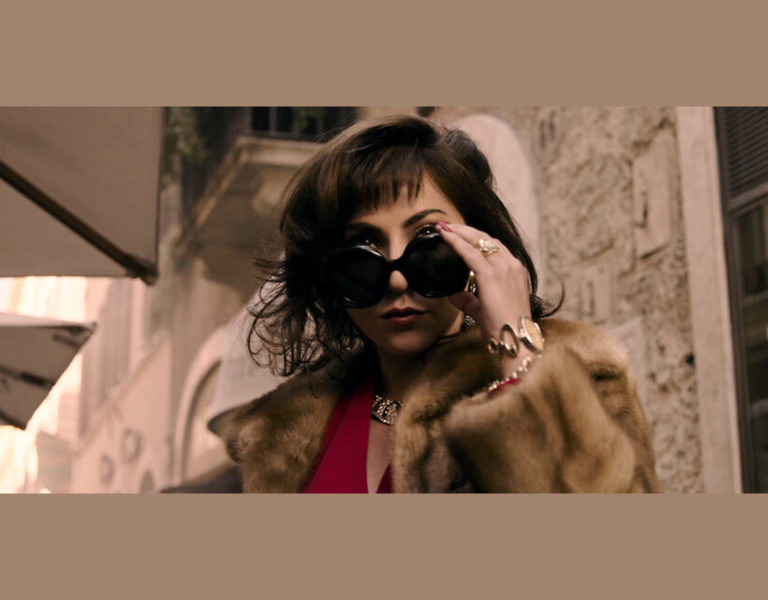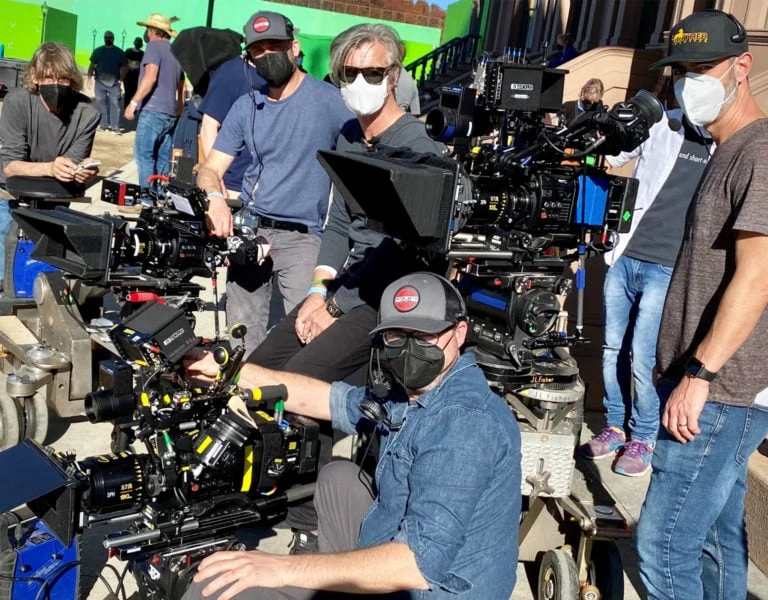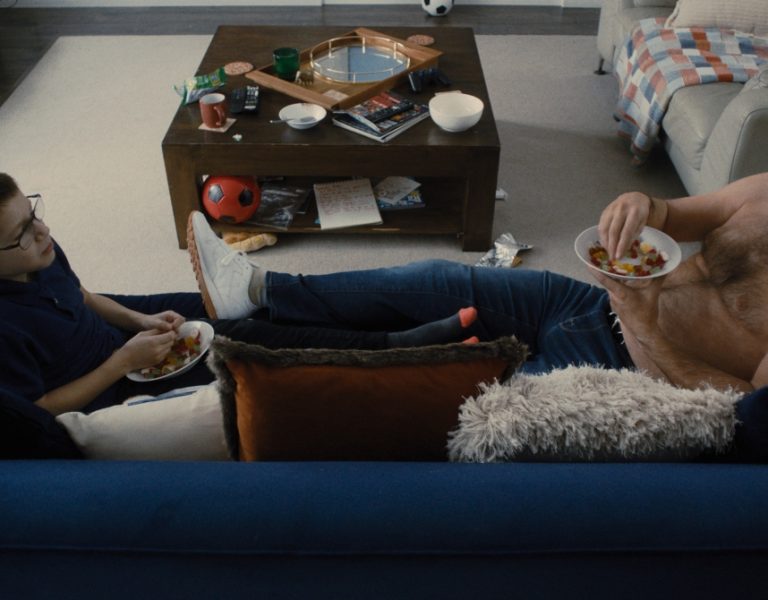THE GILDED AGE OF LIGHTING
Manuel Billeter reveals the techniques and technologies used when lensing The Gilded Age, including taking the Lightbridge’s Cine Reflect Lighting System to the next level.
Cinematographer Manuel Billeter has a habit of shooting shows situated in New York City, whether it be Person of Interest, Law & Order, Jessica Jones, or The Gilded Age. “New York is a fascinating city. It’s an iconic character that contributes a lot to the story. I try to have the city as an active participant rather than as a backdrop.”
The Gilded Age is different from the previous projects as it is a period piece set during the 1880s. “The Gilded Age is not as moody as other shows that I’ve tended to shoot. It’s aesthetically driven. The costumes, sets, and locations are exquisite. The colour scheme reaches every palette and variation that is available. It’s not visually muted but a kaleidoscope of colours, patterns, and textures. I tried to embrace, underline, and celebrate that as much as I could. It’s an important part of the visual vocabulary.”
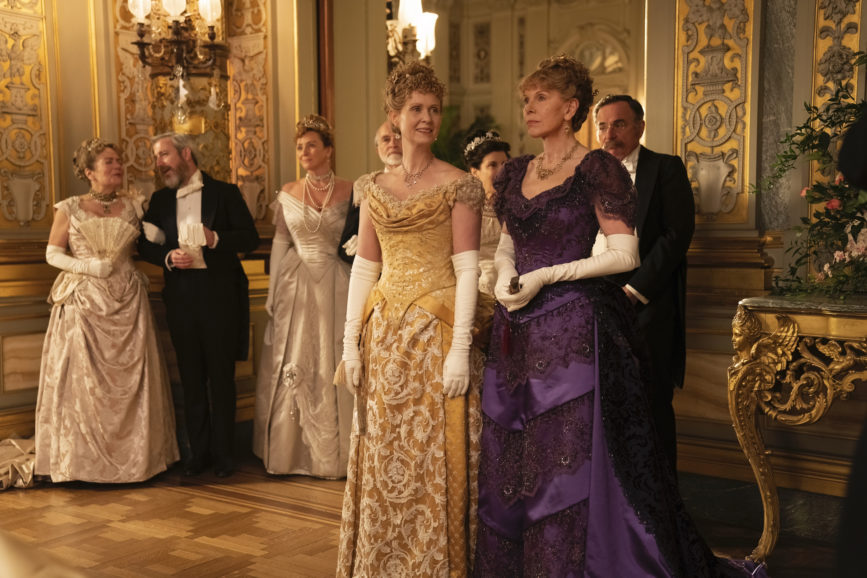
Major visual references were portrait painter John Singer Sargent, The Magnificent Ambersons, and Mr. Turner for period lighting. Billeter shot episodes 103 to 106 with Salli Richardson-Whitfield while fellow cinematographer Vanja Černjul HFS ASC was paired with Michael Engler for the pilot and episodes 102, 107, 108, and 109. “It was a formidable collaboration,” says Billeter. “Sali and I did a few storyboards for the bigger sequences, but we mostly spent time onset together looking for the camera angles that suited the scene and worked well with the blocking.”
Cine Reflectors are intended to be used with a hard source like a beam projector, but I thought maybe if I used a SkyPanel that is soft from inception it would come back even softer. It worked and produced a soft gentle light,
Manuel Billetier ASC
Previously Billeter served as a camera operator for Černjul. “We had an understanding of what the visual approach would be overall and were alternating with each other almost on a daily basis. Vanja would shoot for five days and then I would shoot two days at the same location. It was important for us to spend time together on location well ahead of shooting and come up with a strategy. By knowing the scenes inside and out we were able to keep track of the chronological order.”
Just as principal photography was to commence, the production was shutdown because of the pandemic and did not resume until the end of September 2020. “The shutdown gave me time to research the period lighting and the evolution of lighting over the centuries,” says Billeter. “It definitely gave me more time to familiarise and immerse myself in that world. Lighting is a carefully considered craft. My philosophy comes from observing light as it occurs in nature.”
Manipulation is required for storytelling purposes. “You want to underscore the psychological truth of the scene that you’re shooting.” The Gilded Age provided Billeter with an opportunity to utilise the Lightbridge Cine Reflectors, which he became aware of through sharing the same agent with its inventor, cinematographer Christian Berger AAC.
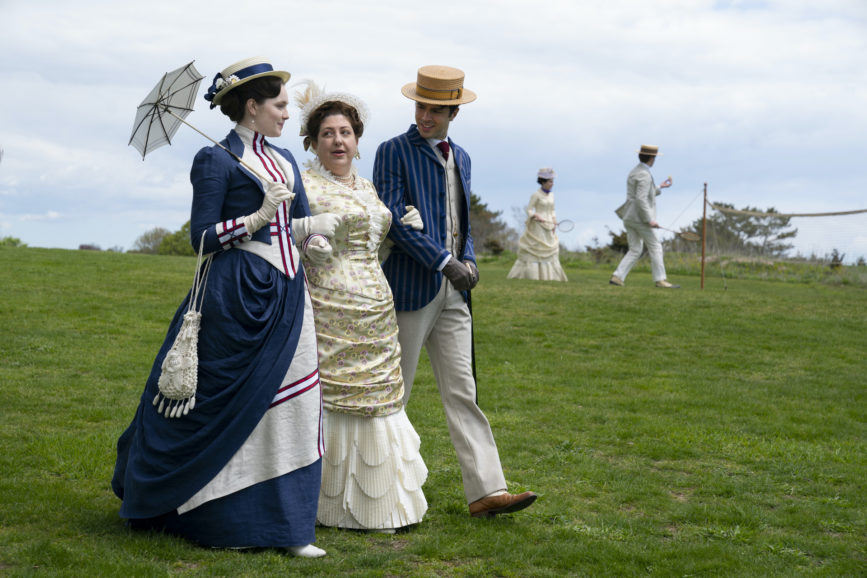
Jakob Ballinger, gaffer and founder of Lightbridge, credits Billeter with taking the Cine Reflect Lighting System to the next level. “Cine Reflectors are intended to be used with a hard source like a beam projector, but I thought maybe if I used a SkyPanel that is soft from inception it would come back even softer. It worked and produced a soft gentle light,” says Billeter.
The topic of sizing also needed to be considered. “When I started on The Gilded Age, I knew we were going to be on huge palatial sets but with small windows,” says Billeter. “I thought if we got panels that were bigger than the one metre by one metre, we could bounce light into it and make use of the ambient light and create a light source from inside the set that feels like its coming from a window.
“Jakob came up with the idea of interlocking four panels and I chose the diffusion grade of violet [aka diffusion #3]. It has a soft bounce back and lovely natural falloff. The quads were rigged on a speed rail grid and attached to two big Crank-O-Vator stands so you could wheel them around and adjust the height easily. That allowed me to put the quad in a corner, see what was coming from a window, crank it up high and tilt it down. Sometimes for indoors I would use the quads to create a book light. Outside of the set, I was putting something harder into it to create more of a sunlight effect. In addition to the quad, we had two sets of the C-100s which is one metre by one metre and comes in diffusion gradations [#1 to #5].”
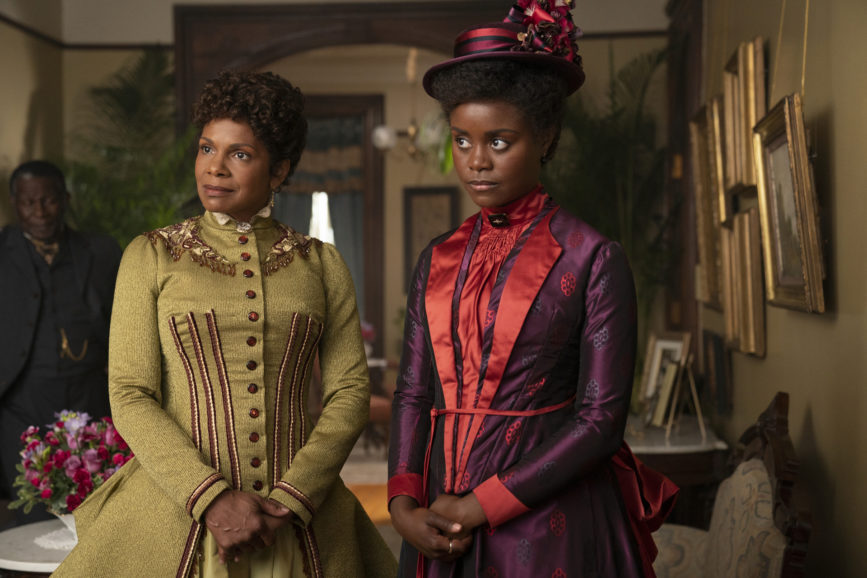
Extensive greenscreen was utilised for the backlot set. “We built a whole city block in the backlot out in Long Island,” says Billeter. “Most of the structures were built up to the second floor so people could come in and out of buildings. The other end of Central Park, towards Madison Avenue, there was much more greenscreen because it just fit in the background.”
Most of the lighting for the greenscreens was for the nighttime scenes. “There were situations where the greenscreen was completely blown out and I couldn’t cut the light, so the decision was made with our visual effects supervisor Lesley Robson-Foster to let it go during the day. At night, we lit the greenscreens with soft sources from the ground.”
Previs was loaded onto an iPad that assisted with the composition and framing of shots. “It showed us what the shot would look like once the visual effects were completed. We had bounces for the actors and two big cranes with 20×40 or 40×60 flyswatters hanging overhead to cut the direct sunlight as much as we could. Sometimes we couldn’t put the cranes up because it was windy, so then you try to do your best.”
Principal photography lasted 150 days with a prime location being Newport which has restored and maintained mansions from the actual Gilded Age. “The preservation society opened their doors to us and let us film in specific rooms or areas of these old mansions which are now turned into museums with all of the original furnishings and details intact,” says Billeter. “The Russell house was a mix of rooms on location and onstage.”
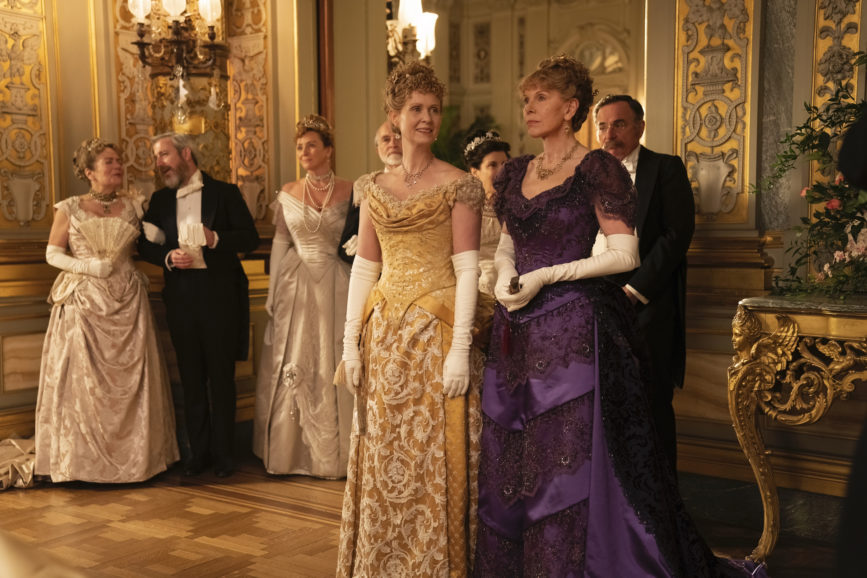
For season one, Černjul decided to capture the footage with two Panasonic VariCam Pure 4K which has been replaced with the ARRI ALEXA Mini LF for season two. “Most of my scenes were shot with a single camera and I would fold in the B camera whenever I could,” says Billeter. “We had a dual lens approach. For the storylines that involve Old New York we used Cooke Anamorphic lenses that have a nostalgic and vintage feel, and Cooke S7s which are more dynamic and crisper for New New York. I tend to favour wider lenses over longer ones even for coverage.”
The aspect ratio was the same for the anamorphic and spherical lenses, “framing for 16:9 and extracting the centre from the anamorphic image.”
One LUT was utilised with LiveGrain added in postproduction to create different film stock grains for Old New York and New New York. “Very often some lighting decisions onstage are made based on the knowledge of how I can play with it in post,” says Billeter.
“More than before, our work as cinematographers extends all the way into the post process because so many choices can be made later. There was so much fine tuning such as playing with the levels of the light and gas fixtures, during which we were working a brilliant colourist, Jack Lewars at PostWorks NY.”
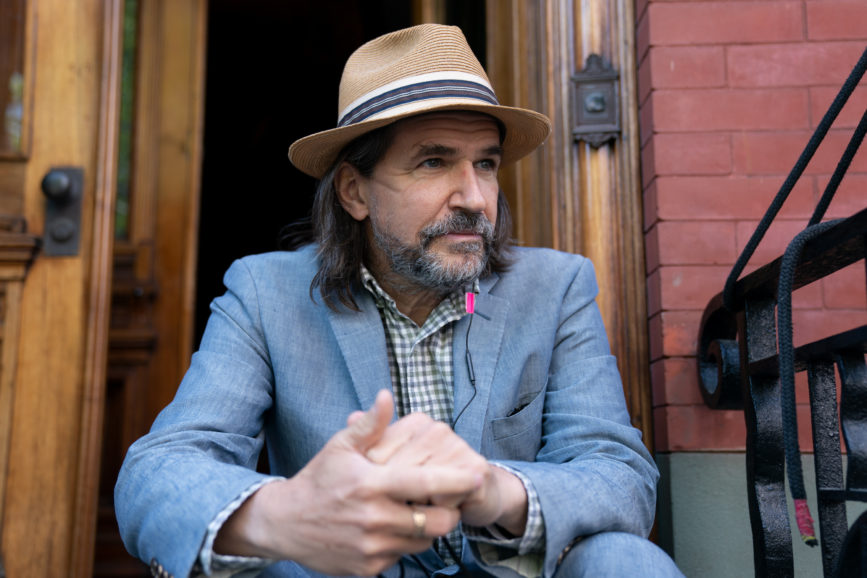
Other key team members included A camera operator Oliver Cary, B camera/Steadicam operator Pyare Fortunato, 1st AC John Oliveri, assistant B camera Michael Burke, key grip Chris Skutch, A camera dolly grip Keith Bunting, and gaffer Sean Sheridan.
The opera sequence captured at the Academy of Music proved to be challenging due to COVID-19 protocols. “The shot starts with the camera in the orchestra pit, pans across to the conductor, dollies right and rises up into the balcony box where our main characters are situated,” says Billeter. “We had to do seven to eight passes with a motion control camera because we couldn’t fill the whole theatre with extras. The result is beautiful as we had real people sitting in the audience rather than being a CG created background.”
–
The article was sponsored in partnership with Lightbridge.





